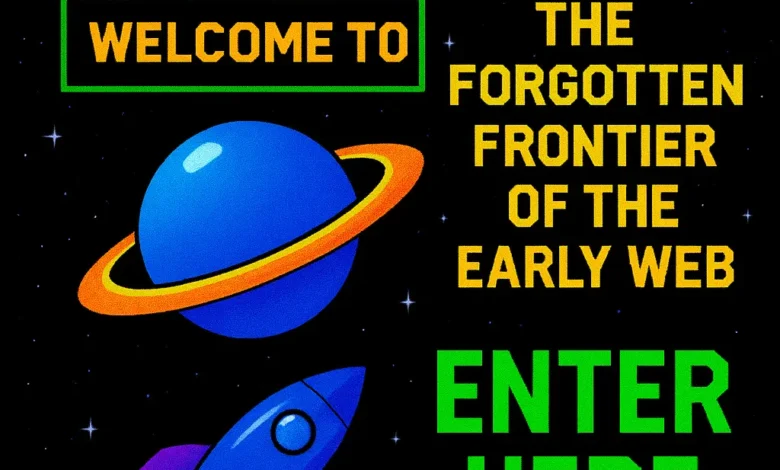Geocities Fletchanz: The Forgotten Frontier of the Early Web

🌐 Step Back Into 1997
Before TikTok, YouTube, and Instagram, the internet was a wild playground of creativity. GeoCities was where everyday people could become webmasters, building their own spaces in themed “neighborhoods.”
One of the most intriguing neighborhoods was Fletchanz — a hub for:
- 🚀 Futuristic concepts
- 💻 Tech experiments
- 🎨 Cyberpunk art & storytelling
- 🔮 Speculative science & ideas
🏙️ The Birth of GeoCities and Fletchanz
GeoCities launched in 1994, introducing the concept of neighborhoods to organize websites by theme. Users picked a neighborhood, got a free subdomain, and began building.
Fletchanz was not your average district.
It was where digital visionaries gathered — people curious about AI, robotics, space colonization, hacking culture, and the speculative future of humanity.
📌 Core characteristics of Fletchanz:
- Heavy influence of science fiction & cyberpunk aesthetics.
- Pages often served as fan shrines to futuristic movies, games, and books.
- Strong sense of “we are building the internet of tomorrow”.
🎨 The Look & Feel of a Fletchanz Page
If you landed on a Fletchanz site in Netscape Navigator or Internet Explorer 3, here’s what you’d see:
| Element | 1990s Fletchanz Style |
|---|---|
| Backgrounds | Starfields, neon grids, tiled circuit boards |
| Fonts | Comic Sans, Courier New, rainbow text gradients |
| Animations | Scrolling marquees, blinking headlines |
| Navigation | Beveled 3D buttons, image maps |
| Music | Looping MIDI files — often sci-fi themes |
| Effects | Sparkly cursors, hover GIFs, “Under Construction” icons |
💡 Fun Detail: Many webmasters proudly displayed hit counters to show how many visitors they had.
🤝 The Community Culture
Fletchanz was more than code — it was connection.
🔗 Webrings
Groups of similar sites linked in a circle. You could “surf” the ring endlessly, visiting page after page of related content.
📜 Guestbooks
Visitors left signatures, email addresses, and quirky comments. Think of it as proto-social media interaction.
🛠️ DIY Learning
- HTML snippets were traded like baseball cards.
- Beginners learned coding by “view source” on each other’s pages.
- Some shared JavaScript clocks, rollover buttons, and custom banner templates.
🛸 Shared Vision
Many pages imagined what life in 2020, 2050, or even 3000 would look like — from interplanetary travel to human-AI coexistence.
🗓️ Timeline of Fletchanz
| Year | Event |
|---|---|
| 1994 | GeoCities launches |
| Mid-90s | Fletchanz neighborhood opens, attracting futurists & creatives |
| 1999 | Yahoo acquires GeoCities — new TOS frustrates many |
| 2000–2008 | Rise of blogs & social media reduces personal HTML site building |
| 2009 | Yahoo shuts down GeoCities — millions of pages vanish |
| 2010+ | Archival projects begin saving Fletchanz content |
📉 The Fall
When Yahoo bought GeoCities in 1999, it tried to commercialize and standardize the platform. Longtime users disliked the new restrictions and corporate vibe. By the mid-2000s:
- MySpace, Blogger, and early Facebook offered easier publishing.
- Templates replaced hand-coded designs.
- Traffic shifted away from personal sites to centralized platforms.
By October 2009, GeoCities in most countries went offline, erasing Fletchanz in one sweep — unless it had been backed up.
📼 Legacy & Preservation
Today, Fletchanz’s digital DNA lives on in:
- Wayback Machine archives (incomplete, but fascinating)
- NeoCities.org — modern reboot with the same DIY HTML spirit
- Retro web design revival — GIFs, neon, and pixel fonts are trendy again
- Academic research on early online communities
🔮 Why Fletchanz Still Matters
Fletchanz is a reminder that:
- The internet can be personal, not just algorithm-driven.
- Learning-by-doing sparks creativity — you didn’t need a degree to build something unique.
- Online culture thrives when people have full control of their space.
🪐 Final Thought
If today’s internet is a glass-and-steel corporate skyscraper, Fletchanz was the neon-lit cyber bazaar — noisy, messy, colorful, and full of life.
It’s proof that the golden age of the web wasn’t about tech giants — it was about dreamers with a dial-up connection, a little HTML, and a lot of imagination.



